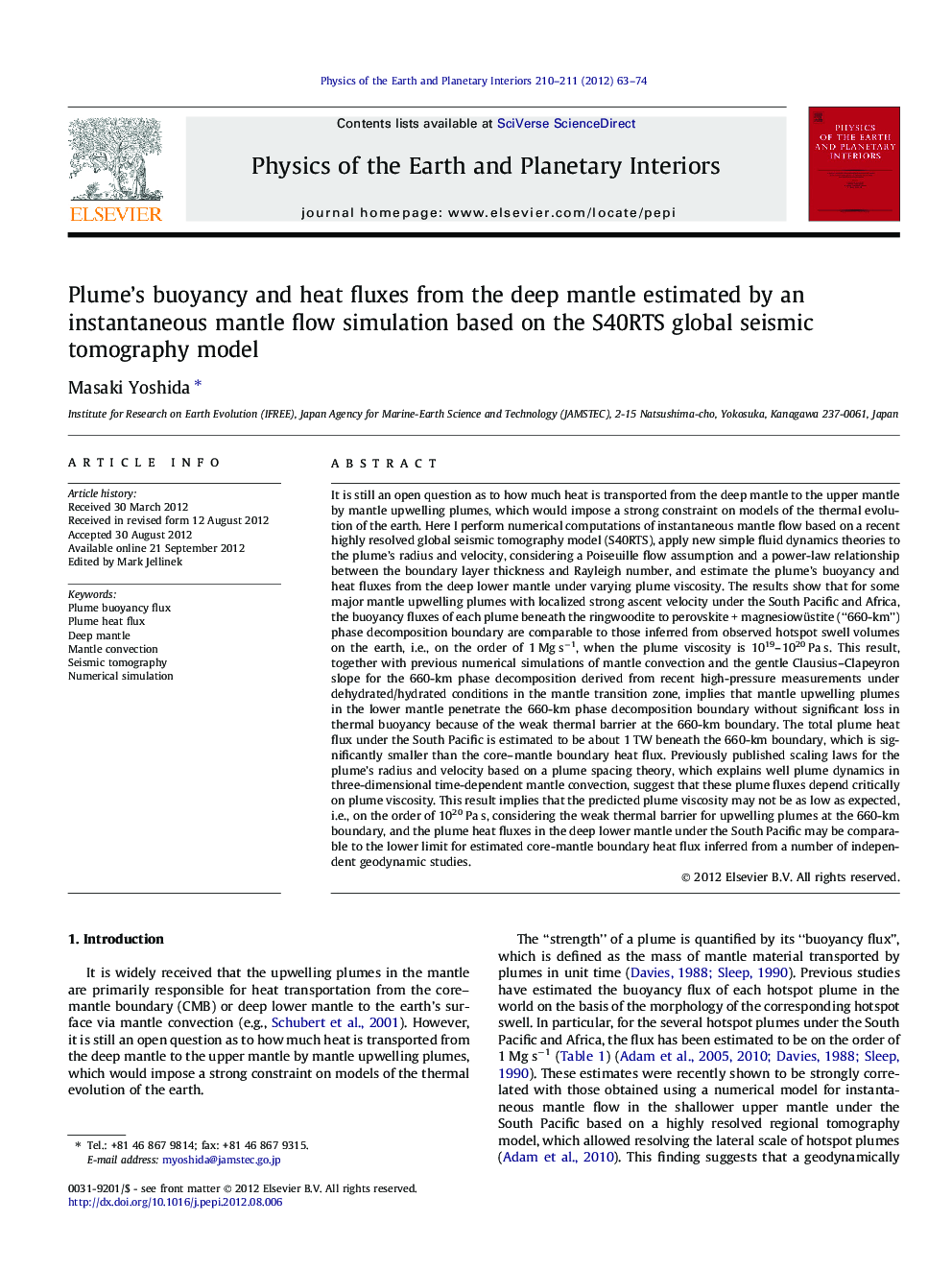| کد مقاله | کد نشریه | سال انتشار | مقاله انگلیسی | نسخه تمام متن |
|---|---|---|---|---|
| 4741784 | 1641529 | 2012 | 12 صفحه PDF | دانلود رایگان |

It is still an open question as to how much heat is transported from the deep mantle to the upper mantle by mantle upwelling plumes, which would impose a strong constraint on models of the thermal evolution of the earth. Here I perform numerical computations of instantaneous mantle flow based on a recent highly resolved global seismic tomography model (S40RTS), apply new simple fluid dynamics theories to the plume’s radius and velocity, considering a Poiseuille flow assumption and a power-law relationship between the boundary layer thickness and Rayleigh number, and estimate the plume’s buoyancy and heat fluxes from the deep lower mantle under varying plume viscosity. The results show that for some major mantle upwelling plumes with localized strong ascent velocity under the South Pacific and Africa, the buoyancy fluxes of each plume beneath the ringwoodite to perovskite + magnesiowüstite (“660-km”) phase decomposition boundary are comparable to those inferred from observed hotspot swell volumes on the earth, i.e., on the order of 1 Mg s−1, when the plume viscosity is 1019–1020 Pa s. This result, together with previous numerical simulations of mantle convection and the gentle Clausius–Clapeyron slope for the 660-km phase decomposition derived from recent high-pressure measurements under dehydrated/hydrated conditions in the mantle transition zone, implies that mantle upwelling plumes in the lower mantle penetrate the 660-km phase decomposition boundary without significant loss in thermal buoyancy because of the weak thermal barrier at the 660-km boundary. The total plume heat flux under the South Pacific is estimated to be about 1 TW beneath the 660-km boundary, which is significantly smaller than the core–mantle boundary heat flux. Previously published scaling laws for the plume’s radius and velocity based on a plume spacing theory, which explains well plume dynamics in three-dimensional time-dependent mantle convection, suggest that these plume fluxes depend critically on plume viscosity. This result implies that the predicted plume viscosity may not be as low as expected, i.e., on the order of 1020 Pa s, considering the weak thermal barrier for upwelling plumes at the 660-km boundary, and the plume heat fluxes in the deep lower mantle under the South Pacific may be comparable to the lower limit for estimated core-mantle boundary heat flux inferred from a number of independent geodynamic studies.
Figure optionsDownload as PowerPoint slideHighlights
► Numerical simulation of mantle flow based on global tomography model is performed.
► Plume’s buoyancy and heat fluxes under varying plume viscosity are estimated.
► Estimated buoyancy fluxes are comparable to those inferred from swell morphology.
► Plumes may penetrate the 660-km depth without significant loss in thermal buoyancy.
► Total plume heat flux under the South Pacific is about 1 TW beneath 660-km depth.
Journal: Physics of the Earth and Planetary Interiors - Volumes 210–211, November 2012, Pages 63–74